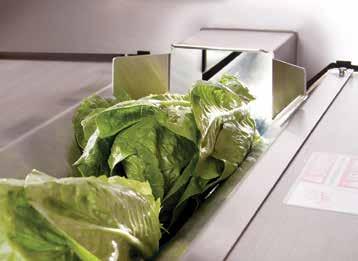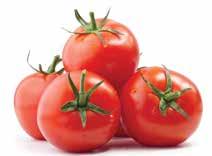
2 minute read
Choosing the right technology for size reduction, slicing and cutting solutions
CHOOSING THE RIGHT TECHNOLOGY
FOR SIZE REDUCTION, SLICING AND CUTTING SOLUTIONS
Food manufacturers are always looking to increase productivity and minimise costs. For fruit and vegetable processors, this can be achieved with the right size reduction equipment for their operation. Sales and operations manager of Heat and Control, Scott Burrows, discusses some common considerations for processors of fresh produce looking to invest in capital equipment.
Time poor consumers continue to seek healthy choices in the supermarket, which in turn is driving demand for healthy and convenient vegetable products. Both fresh and frozen vegetable processors are developing innovative style cuts which can be used in a prepared meal kit for customers to easily add to recipes at home. Zucchinis or squash can be cut into a long, noodle-like strip, while beets and carrots can be presented in a novelty bowtie cut, instead of conventional straight cuts. The most advanced size reduction equipment on the market can deliver a clean, precise cut for fresh vegetables, resulting in a limited moisture release for increased shelf life compared with alternative cutting methods. Some ingredients are easily processed through gravity feeding, while others need to maintain structural features and are more easily belt-fed into the cutting area, where the timing of cuts corresponds to the belt speed – a method used when slicing leafy vegetables. Density, structural fragility, temperature and flowability should be taken into account.
The type of knives used in size reduction technology is key to producing a cleaner cut. Ensure the knives are made from stainless steel of the highest grade to produce the sharpest edge so that the knife lasts for longer, and the cutter has fewer knife changes. Rigorous quality assurance testing should also take place to make sure the equipment can withstand tough environments.
Types of slicers
With a belt-fed wheel slicer, produce is delivered onto two high-speed feed belts sloping together to form a ‘V’shaped feed trough. The belts are synchronised with the rotating slicing wheel to ensure proper advance of product per revolution of the wheel. Knives under tension serve as spokes and support the rim of the slicing wheel. The knives are slightly twisted to create a uniform pitch from the hub to the rim.
A belt-fed wheel slicer
A TranSlicer™ by Urschel is an example of this type of machine. This type of cutting application is ideally suited for leafy vegetables including romaine, iceberg, kale, radicchio, cabbage, spinach, celery, cucumbers, eggplant, honeydew, cantaloupe, and leek. This type of slicer accepts firm and leafy (or more compressible) products up to certain diameters, and is ideal for elongated products that benefit from proper orientation, reducing overall waste. With a versatile comminution mincer or slicer, produce is guided to the high-speed, rotating impeller where it revolves at a high speed inside the cutting head. Centrifugal force propels the produce outward past the cutting edges of the stationary reduction head. These types of cutting applications are used in the production of dry, paste and liquid size reduction volumes including purées for fruit juices, and fruits and vegetables for baby food or soups, with various consistencies available. A Comitrol™ by Urschel is ideal for this type of size reduction.
For more information contact Heat and Control New Zealand on +64 9 274 4182 or get in touch via info@heatandcontrol.com or www.heatandcontrol.com










